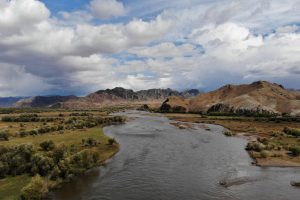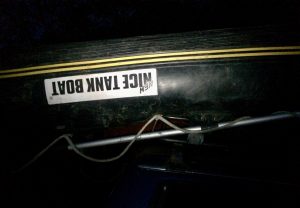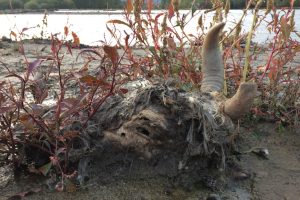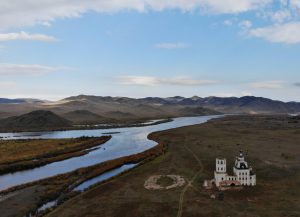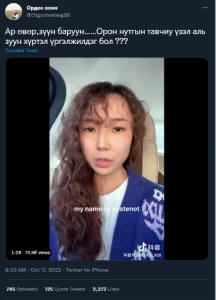By Julian Dierkes
With the “Protecting Human Rights on Social Media Law” we have seen another round of what seems like fairly misguided legislation. Tegshbayar has already questioned the need for an expedited process and other aspects for this law. This misguidedness fits into a longer pattern on legislation that is not followed up with implementation and controversies over similar laws in recent years that touch on freedom of speech and other human rights.
Even though Pres. Khurelsukh vetoed the law and we will have to see whether parliament attempts to override that veto, it seems worth reflecting on this pattern of legislation.
Three aspects in this process struck me as noteworthy:
- A strong belief in legislation as effective administrative fiat that turns some laws into mere aspirational statements.
- Implementation of these laws is not thought about nor pursued. That is especially pernicious when it comes to legislation that touches on fundamental freedoms.
- Parliament does not effectively reflect any kind of public discussion of pressing issues, but the press, academia and civil society remain somewhat ineffective at providing analyses that might sway legislators who have little to do with a particular issues. The political weakness of the MPP is another challenge in that process.
Make it so by passing laws
In many political discussions, there is a strong sense that laws are the solution to social problems, policy challenges and all kinds of other situations. As long as eight years ago, Mendee looked specifically at failures in mining policy and focused in one post on such sources of failures as “Let’s-Change-It Syndrome“.
I have also written about the apparent search for perfection in policy solutions, or the challenge of letting the perfect be the enemy of the good. In that context, an impression that really has stayed with me is that in workshops we conducted with the MPP youth organization, participants so often identify their favourite ideological orientation/party platform as “the party that does the right thing for the nation”, reflecting a similar belief in perfect solution, but also in the power of legislation to bring about change.
Obviously, legislation has a significant role to play in bringing about social change. However, legislation that does not also carefully consider how it will be implemented, is not likely to be very effective in that regard. Without some kind of theory of change, i.e. an understanding of the social mechanisms that might actually bring about the desired social change, that change is unlikely. And, simply telling people that a certain behaviour is bad or illegal will not necessarily change that behaviour as is clear in all kinds of criminal contexts, minor (jaywalking) or more significant. One recurring example that shows up in the current law again is drug use where belief in making narcotics illegal is stubborn in Mongolia despite decades of experience in many countries that this approach is ineffective and endangers many people.
But the strong belief in laws as the main element in social change is reflected in the many strategies, agendas, and legal/international commitments that the Mongolian government has made. Oyun-Erdene’s Vision 2050 seemed to be an attempt to recognize that and focus more on implementation, but it is not clear that this attempt is turning out to be very fruitful.
Laws not Designed to be Implemented
It seems somewhat dangerous to pass laws that touch on fundamental freedoms when they are never intended to be implemented.
This current law seems to have been designed primarily as a statement (to whom?) that troll behaviour and especially commercially-organized troll behaviour will be prosecuted. But would they actually? It seems more likely that the threat of legal action is meant to shape the social media sector into something that may be more friendly to public figures, but that there is not much of an attention to actually prosecute.
But, aspects of this law touched on some pretty basic freedoms, like freedom of speech, freedom to protest, etc. Legislators in all democracies should generally be very careful in any legislation that touches on such basic issues and perhaps especially saw in Mongolia where the supreme court has not been very active in offering interpretations of legislation that guide its application.
When the proposed law set up conditions under which the internet could be “turned off”, for example, that should be a step that should be closely circumscribed with conditions for that decision. If the law had been signed by the president or will be passed in the future, but will not actually be applied, the conditions under which something like an internet shut-off could be allowed, would not be tested by the courts. The risk that comes with this strategy is that a future bad actor could thus easily avail themselves of such a “dormant” provision in a law to take anti-democratic steps that seem to have the veneer of legislative approval. I do not suspect that any of the current actors are quietly trying to plant such mechanisms, but that is a risk that legislation poses that is not intended to be enforced.
Mongolian legislators are by no means alone in relying on legislation to make grand statements of their aspirations for a better society, but it seems like laws are not a good place for such statements.
Deliberation
Finally, as Teghsbayar has argued as well, the hasty passing of legislation sets a poor precedent. This is especially true of laws that touch on such fundamental freedoms as this law did.
Not only does a process of public engagement allow for different views on a law to be examined, but such engagement will also expose weaknesses in a draft. With the current proposal, a more thorough public process would have surely pointed to the lack of a structure in which the “public relations unit” that was meant to enforce the law would operate in, as a serious short-coming. That is an example where public engagement is simply part of a more solid legislative process.
The overall weakness of the ecosystem of policy analysis in Mongolia contributes to the lack of examination of laws when engagement is not facilitated by public. Ideally, the media, academics, think tanks, NGOs, and opposition parties would all comment on draft laws, and comment in public. Such commentary would force the proponents of a given law to justify some of the decisions that they have made. For example, in the current law, why are there so many provisions that are already covered by other (criminal) laws, as Tegshbayar has pointed out?
It is also curious once again to observe that the MPP does not appear to be generating legislation from some kind of central party apparatus. The technical deficiencies of the current legislation generally suggest a lack of a vetting process for proposals that may raise the quality of legislation and the likelihood of enforcement. Once again, Mongolian democracy reveals itself as a no-party state.

 Follow
Follow
